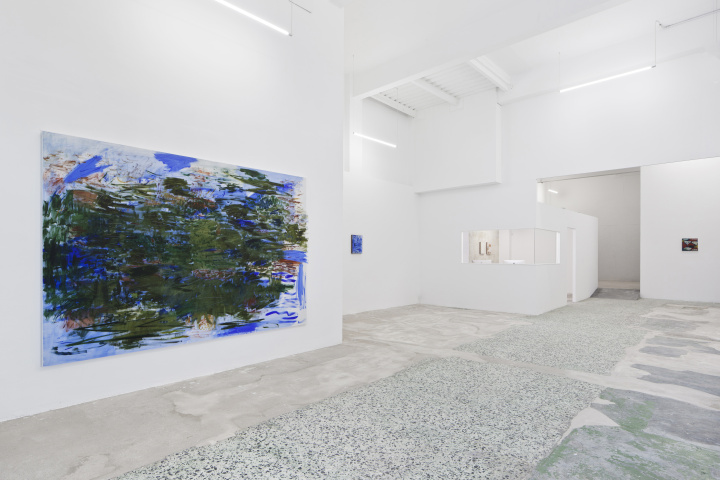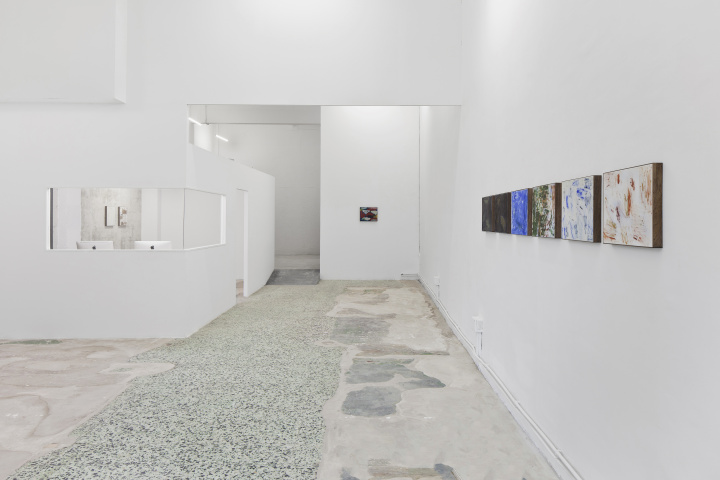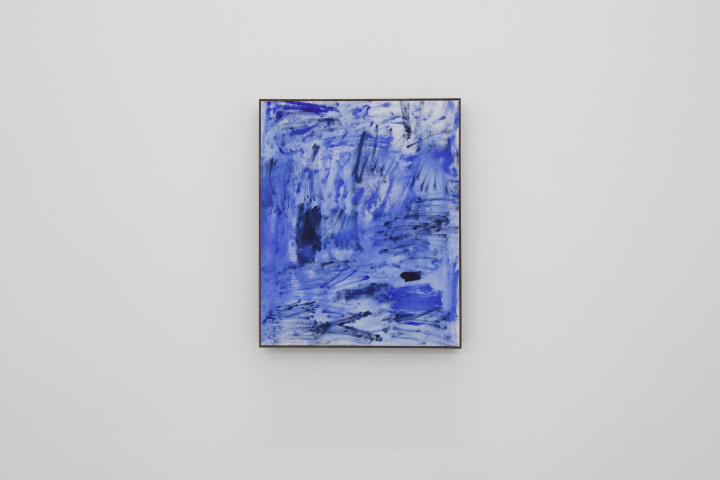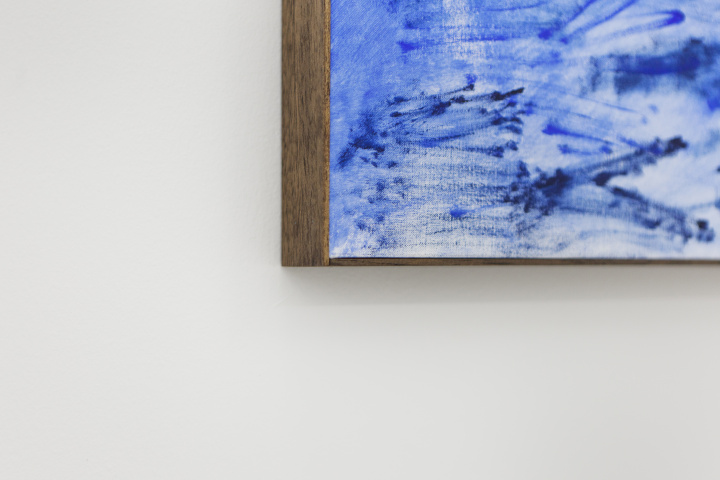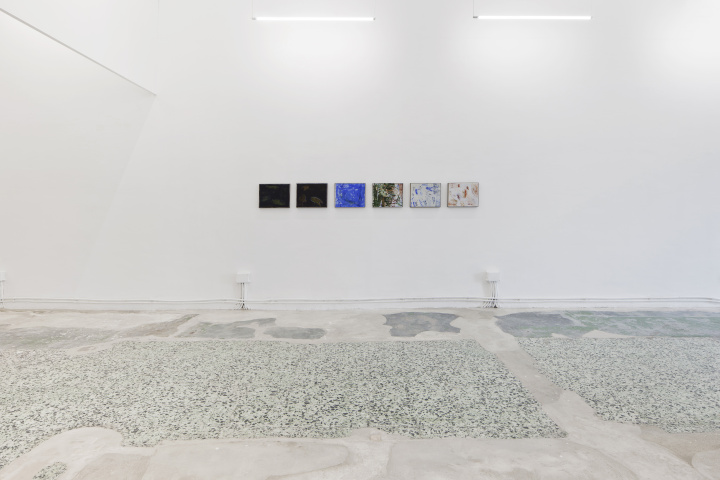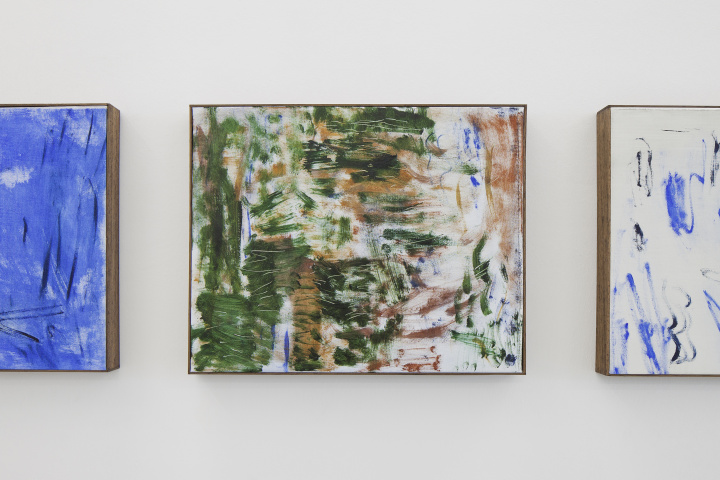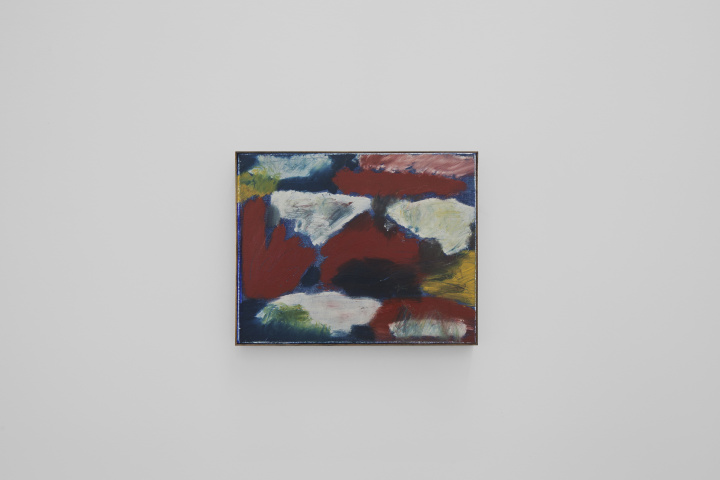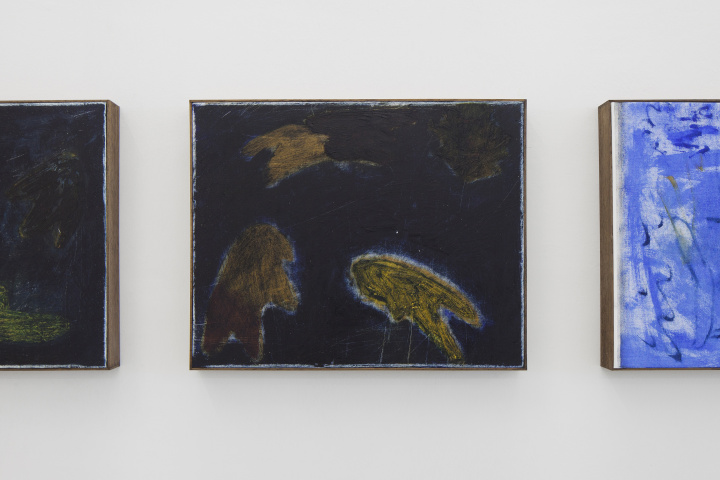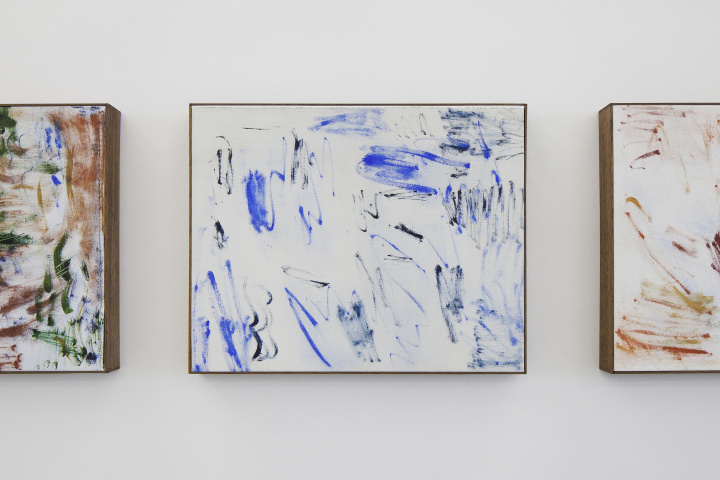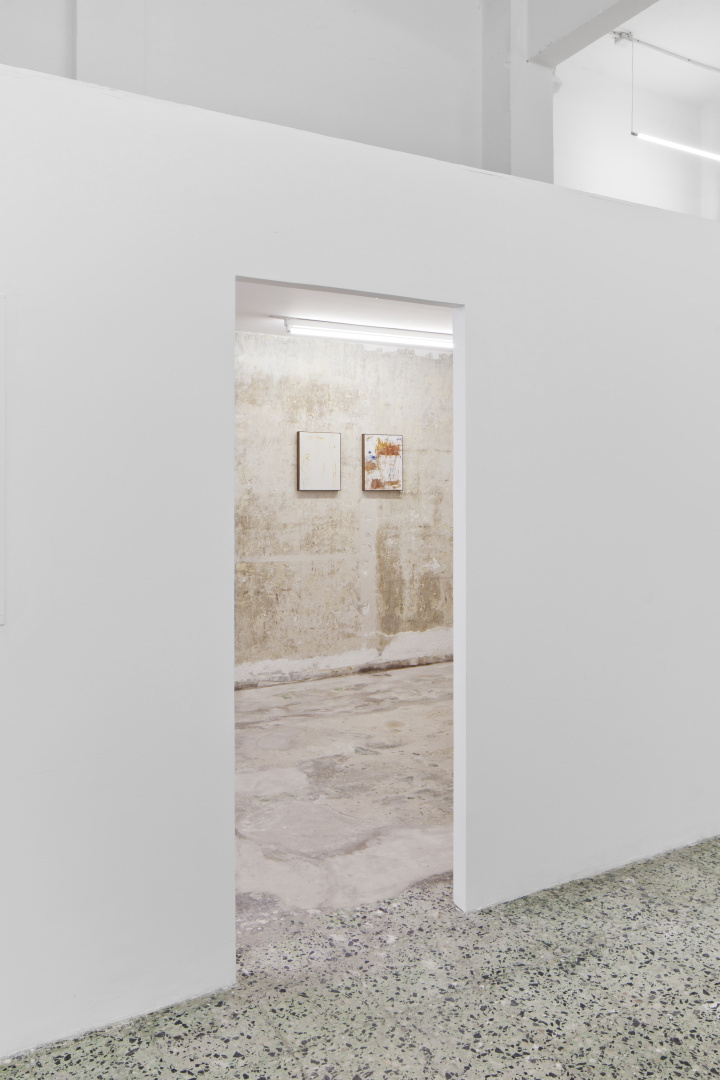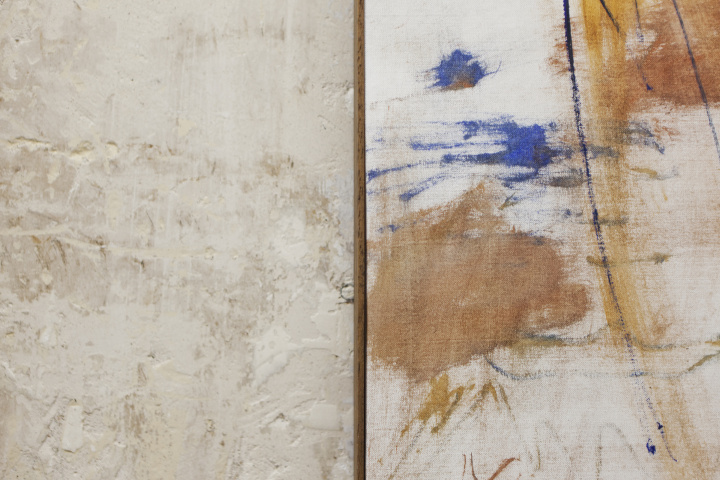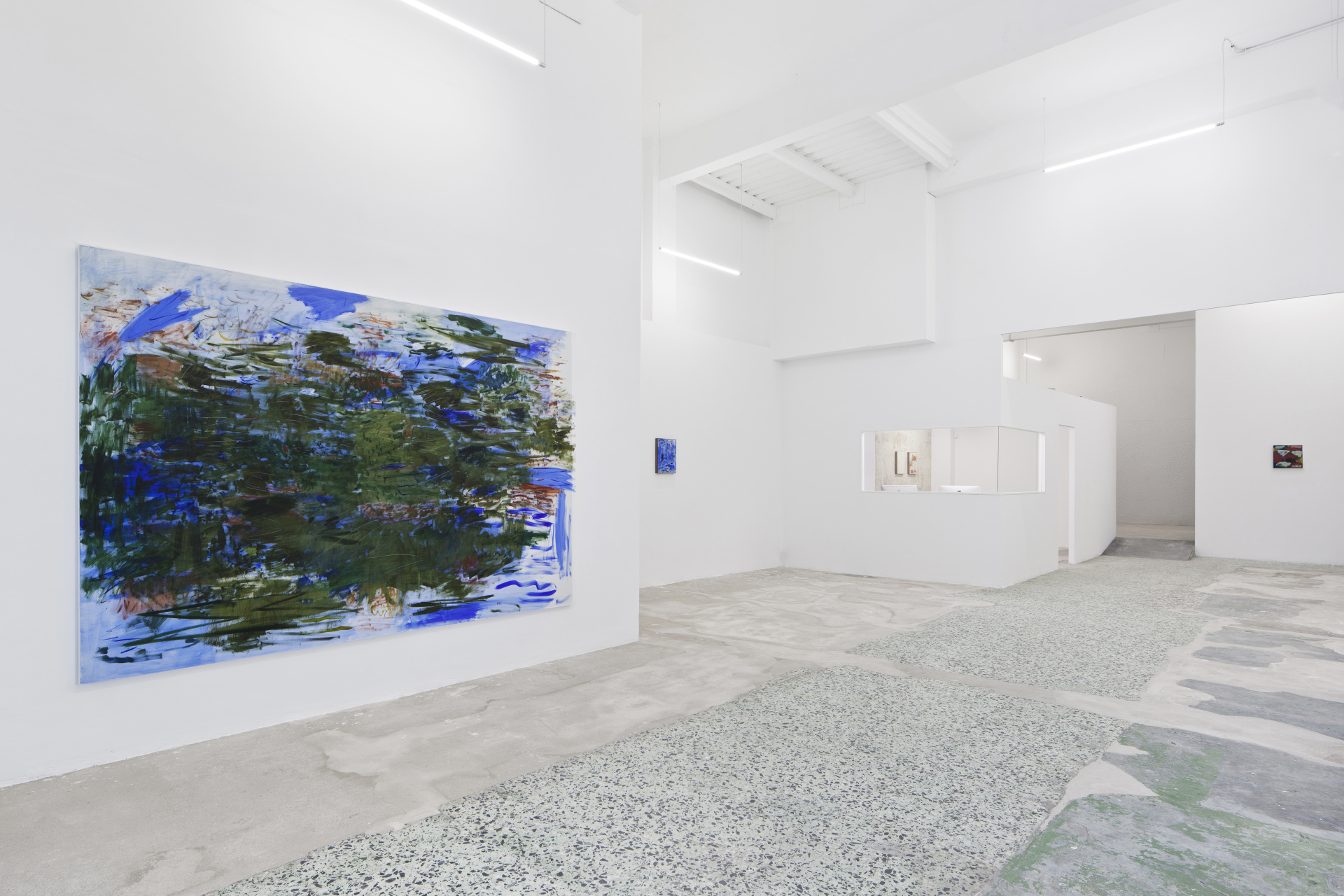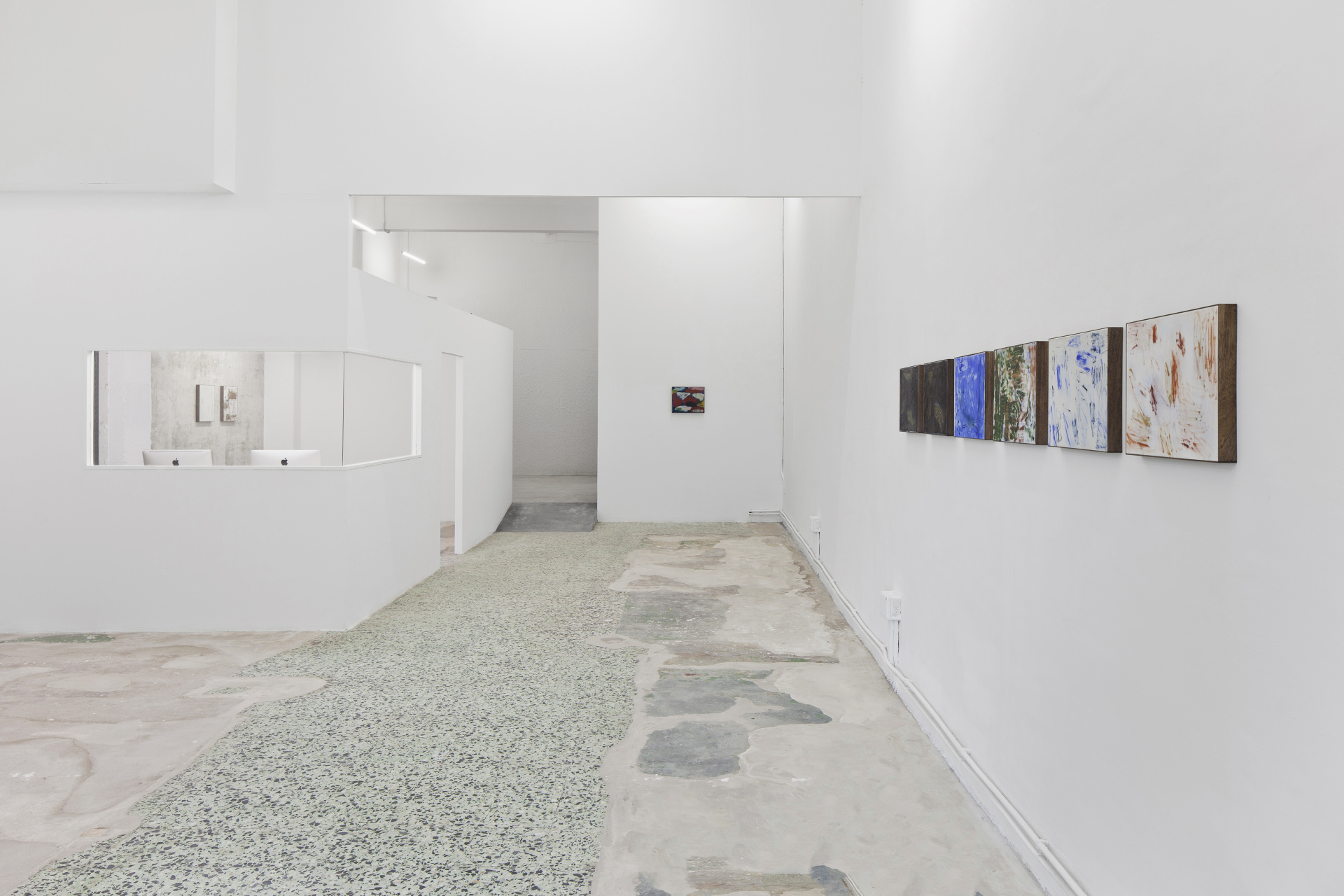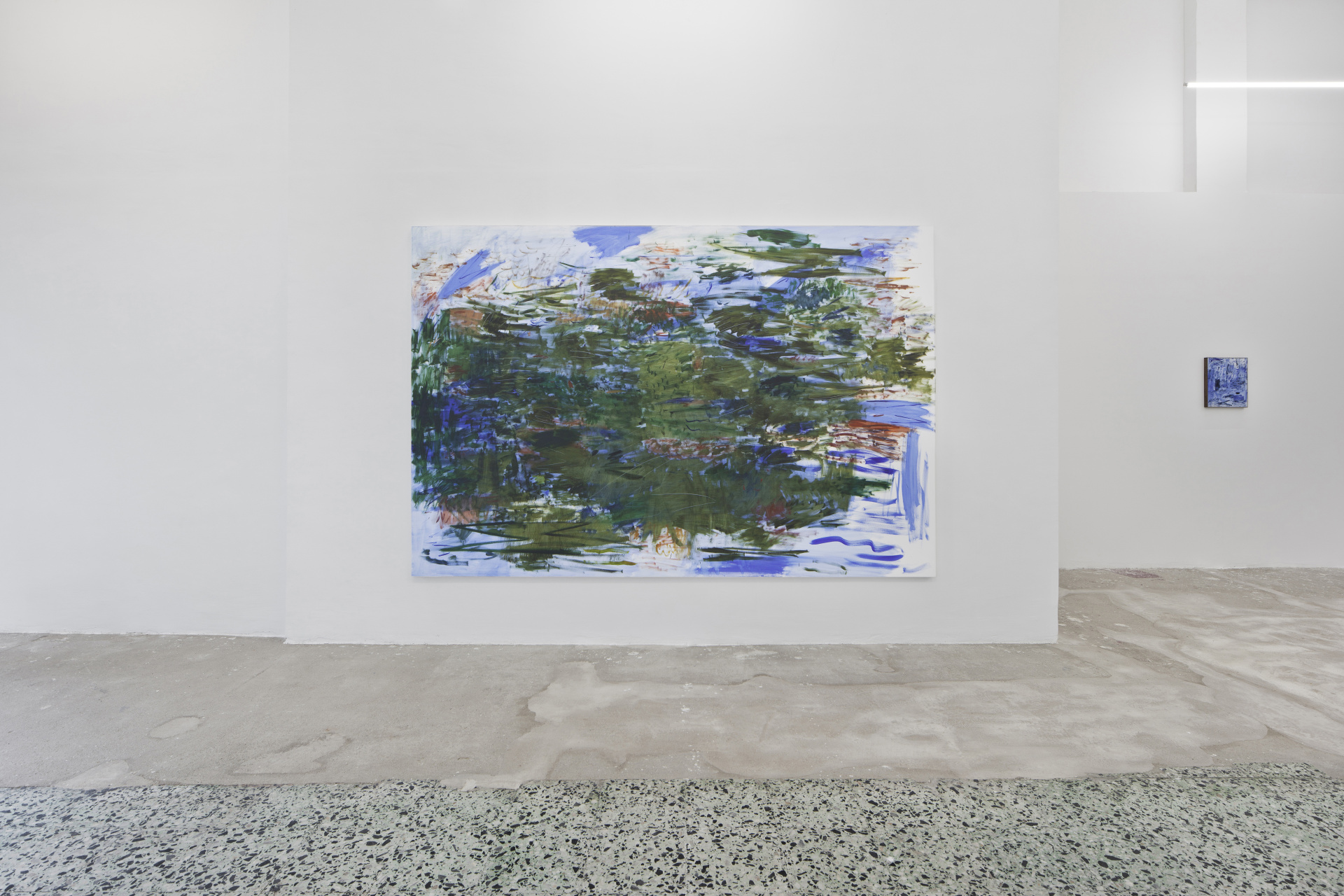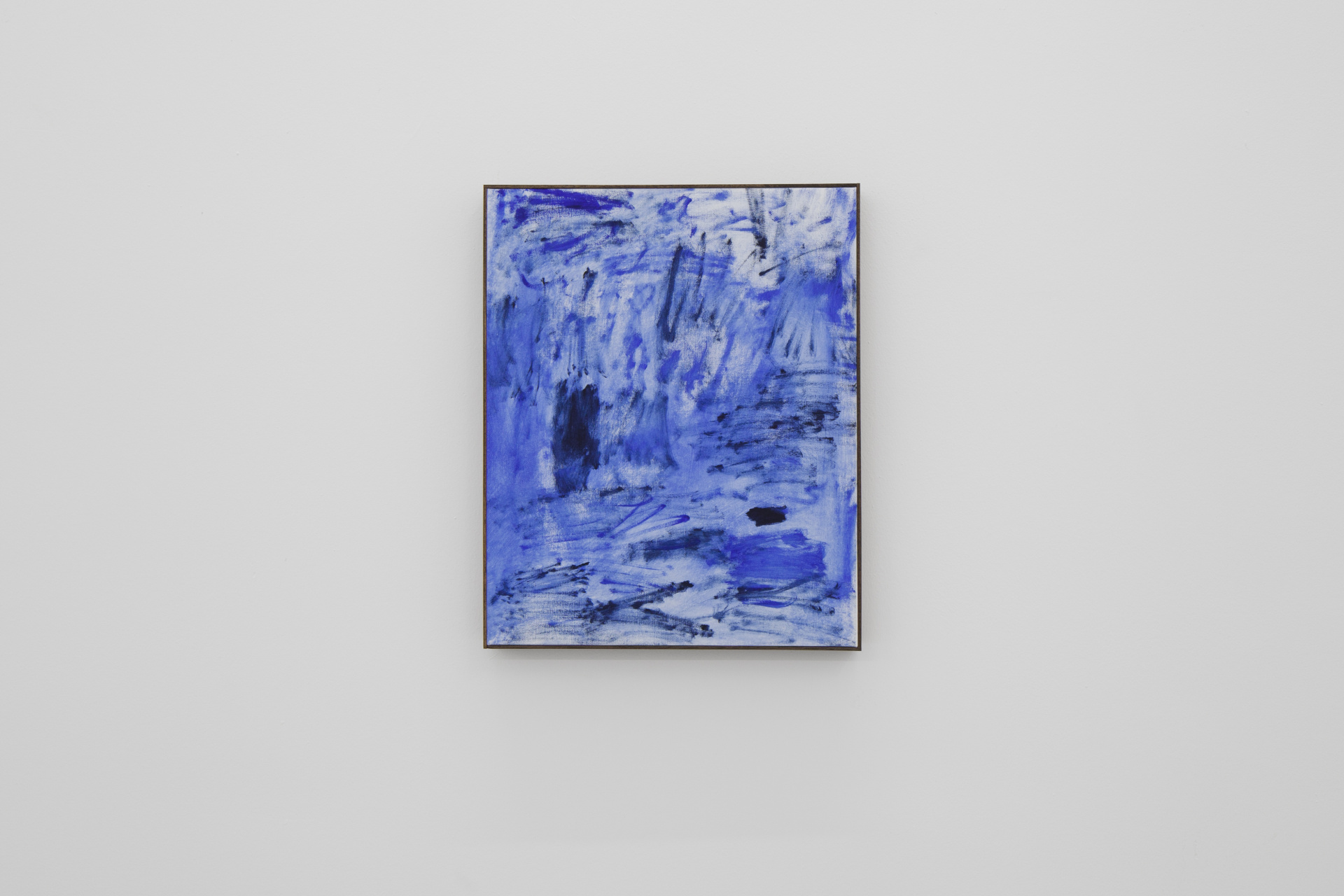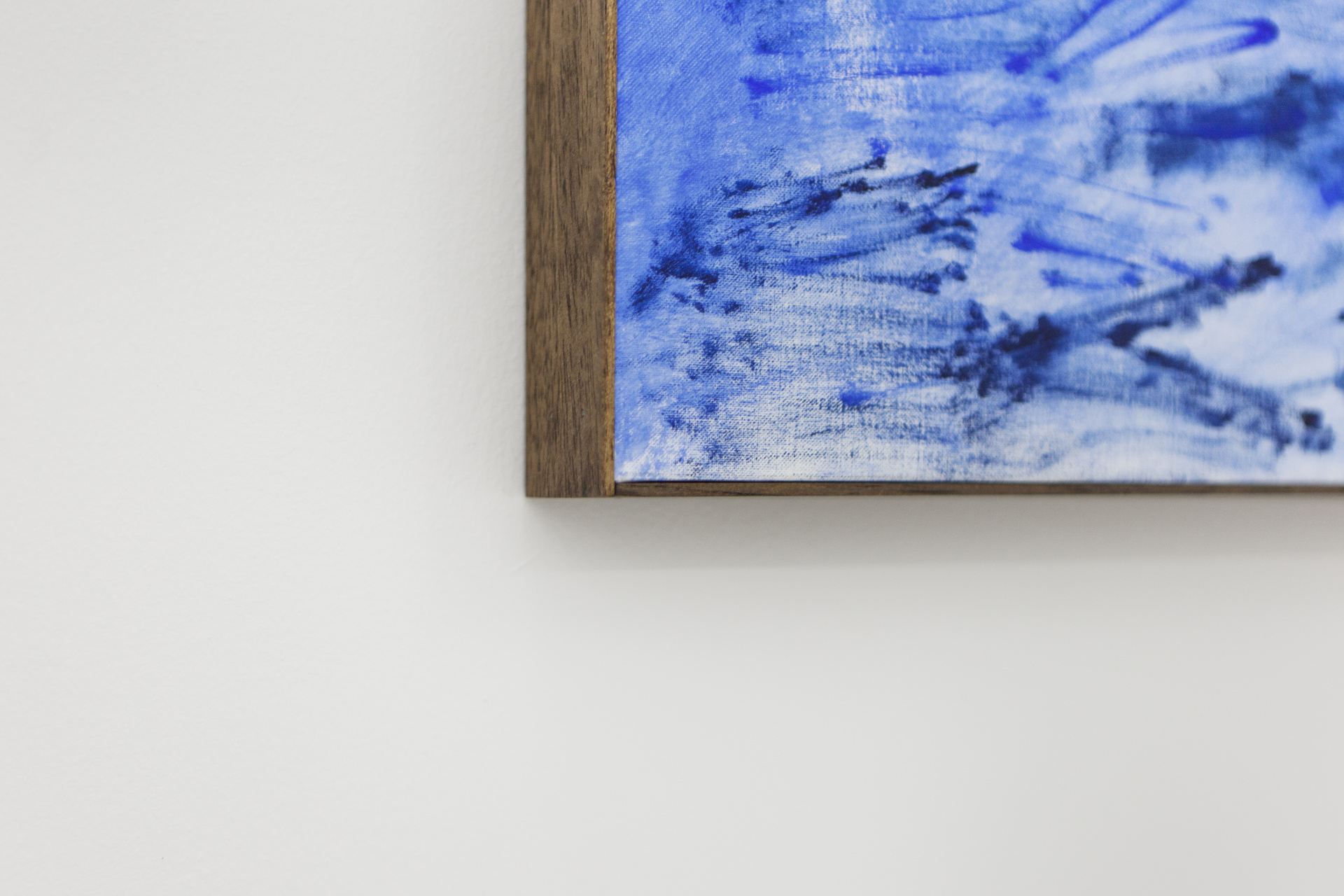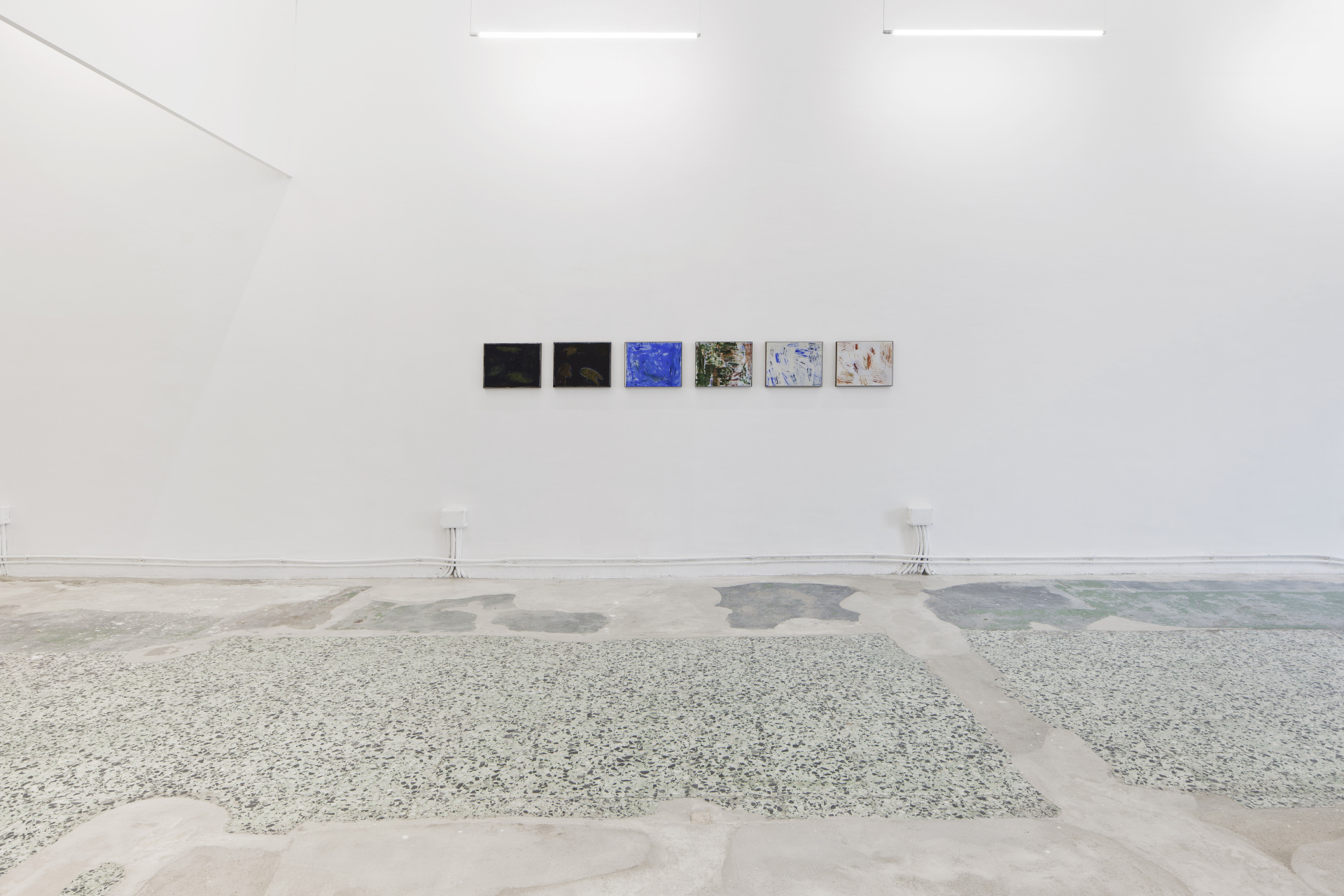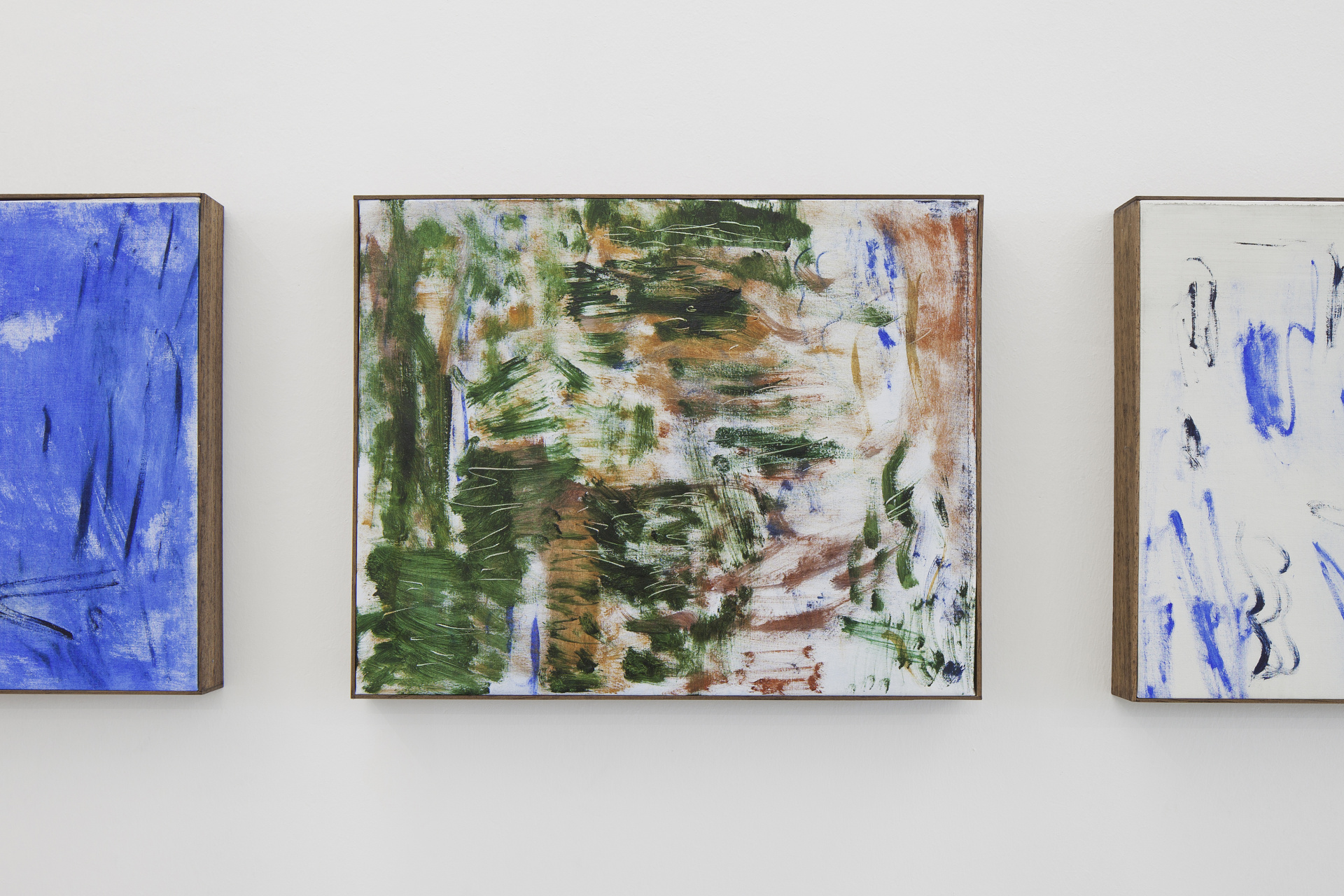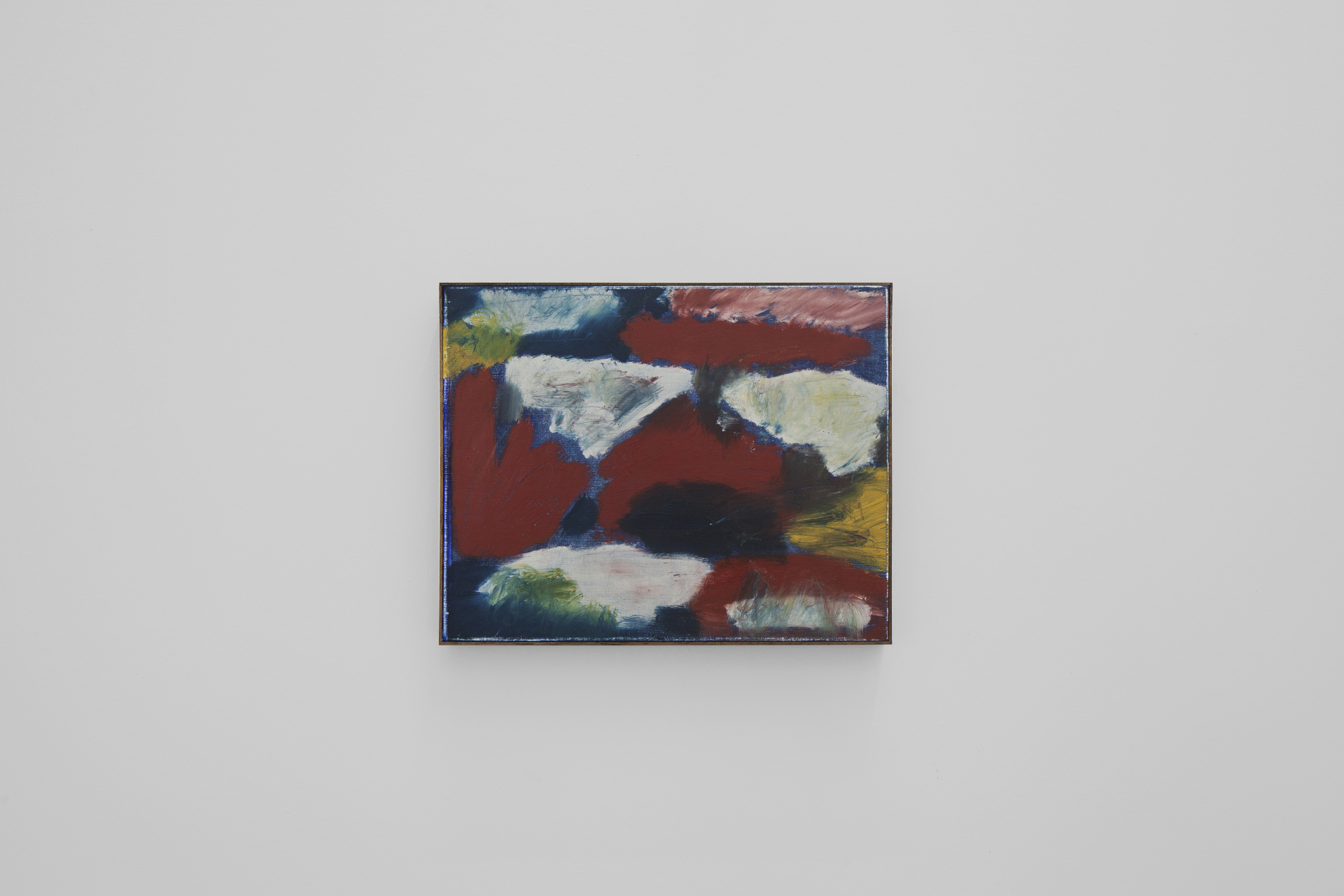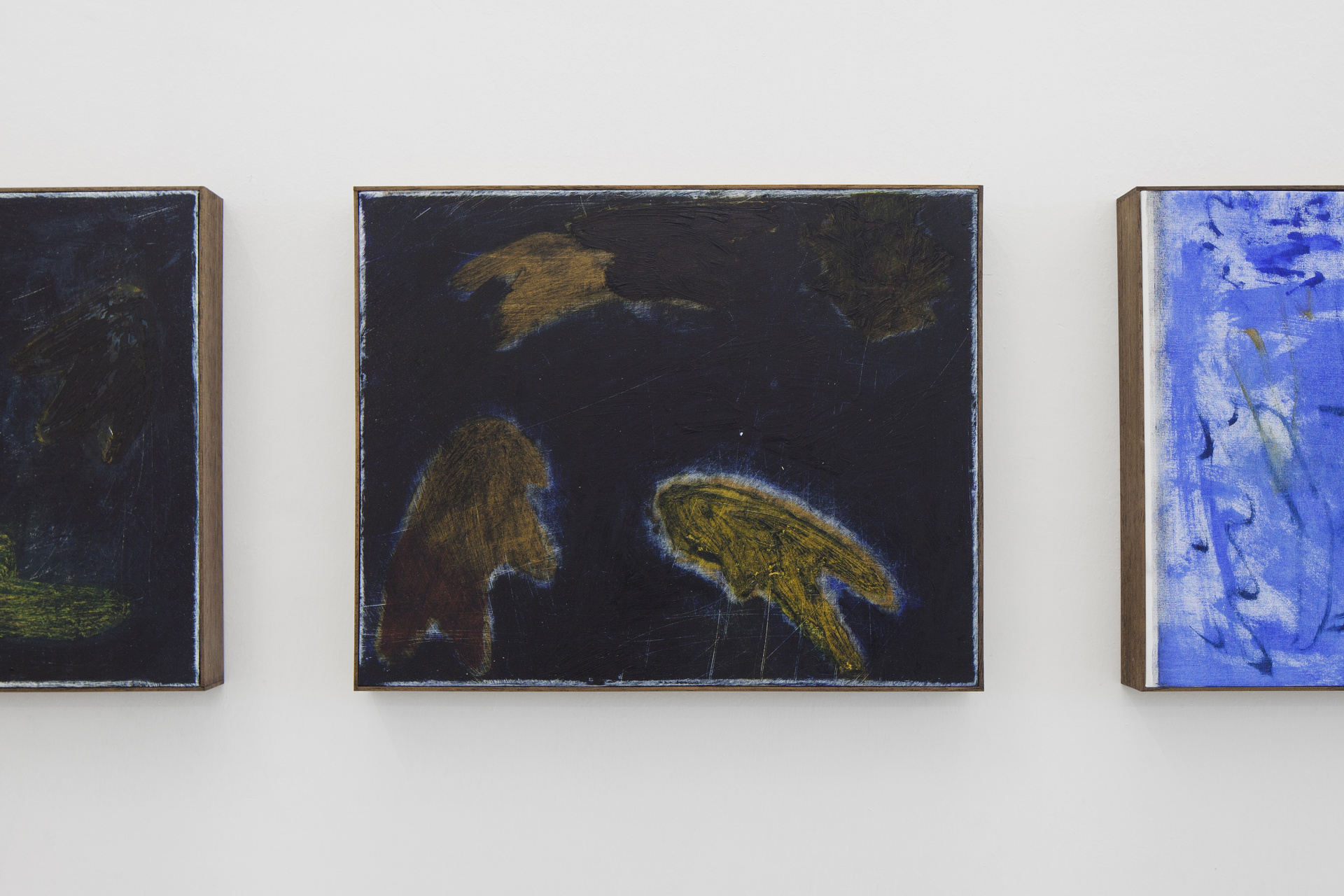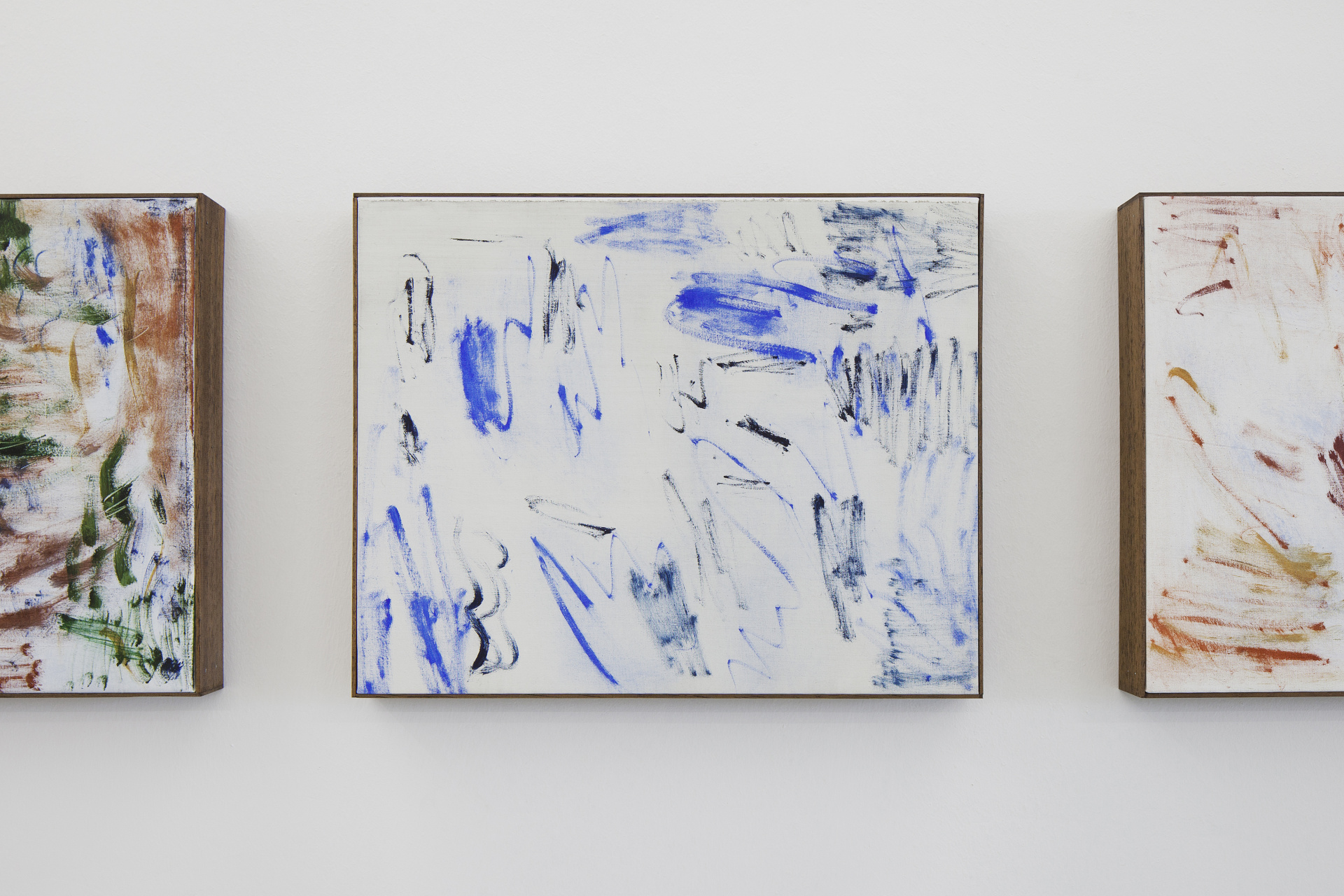Sol y solitaria, llena de avispas Miguel Marina From December 22 to February 16 A Coruña
Tuesday 28th November, 1.47 pm
In a phone call, Miguel tells me that his approach to painting encompasses several modes of material exploration, and that these often occur simultaneously. I find it curious how he talks about his process while he is painting from a primarily material relationship: he talks about its weight, the light it reflects, the watery and its solidification. He refers to the act of painting as "entering and working with movement, fixing or undoing a gesture". At this moment I think that, Sol y solitaria, llena de avispas [Sun and lonely, full of wasps], it could be a room with an open window through which dust, light and summer insects enter. If I respond to this writing exercise proposed to me by the artist with honesty, I have to admit that painting is not the formalisation of visual art that most captivates me. However, I am interested in the terms in which he speaks, perhaps it has to do with the fact that they exemplify qualities very similar to the trace that a body can leave within architecture.
Marina's previous works were stuck to the walls, in them the paint took on the form of a veil of colour, liquid and porous, adhering to the plaster and staring at the door frames of the room. These earlier works have a discreet and profound presence, they relate to the space and the visitors through seduction: the artist generated a series of planes of paint that covered the previous gestures and imprinted watery layers until reaching an ethereal and fixed image that sought to be perfect.
In a conversation between André Lepeki and Sonia Fernández Pan, Lepeki wonders why in the 1950s some artists coming from painting and sculpture began to use choreography as a working material to rethink their practice. Thus, he refers to an essay by Allan Kaprow on Pollock in which he describes that instant when the painter turns the canvas from the vertical to the horizontal plane: it is precisely at that moment when he begins to spill streams of paint and to create a completely different relationship between his body and the canvas. However, Kaprow also states that it is a pity that Pollock did not continue to expand the act beyond the limit of the canvas; that he did not turn space into canvas, architecture into canvas, painting into space... This is an event that I would certainly have liked to witness or see its trace.
But Miguel continues his story about this exhibition, he has been working for the last year on the pieces that we can see today in the gallery. He states that there is something substantial that has changed in his gesture, in the material: in these works, he is exploring the solid and this is the first time he is showing us this new movement. While before he worked from the fluidity of matter to dissolve and cover, now he is understanding how to undo the solid from the presence of the solid. That is to say, when one of his gestures imprints a new form, this new form accommodates itself to the canvas, taking a space that Miguel is going to respect. Now there is no veil, no discretion, but rather an exercise in honesty, in integration. Listening to him, I am left thinking at a table, after a copious dinner, of the gestures that have been imprinted on the tablecloth, indelible; or the materials that we eat and disintegrate in the stomach.
At 1.47 pm on Tuesday, 28th November, Miguel takes a photo of his studio and posts it on social media. At the same moment, here in Berlin, in front of my studio, it has just snowed and I take a photo of the covered surface. Synchronicity is something like relating two things that share a time, but don't necessarily have a spatial continuity. Or put more simply, it is doing two different things simultaneously. In the paintings from this exhibition, we see a superposition of gestures that have happened in an indecipherable time or all at the same time; however, they create a continuous space in this present time in which someone is in front of the painting. I don't know if the snowflakes cover the surfaces simultaneously or if, on the contrary, when they fall they are no longer flakes, but are amalgamated into the continuity of what we perceive as snow, thus undoing the possible synchronicity. What we can see in this exhibition room is that perhaps, between the solid and the liquid, this movement seems to have something to do with Miguel's paintings.
Berta Gutiérrez
